June 24, 2018
My soul is in the sky.
― William Shakespeare, A Midsummer Night’s Dream
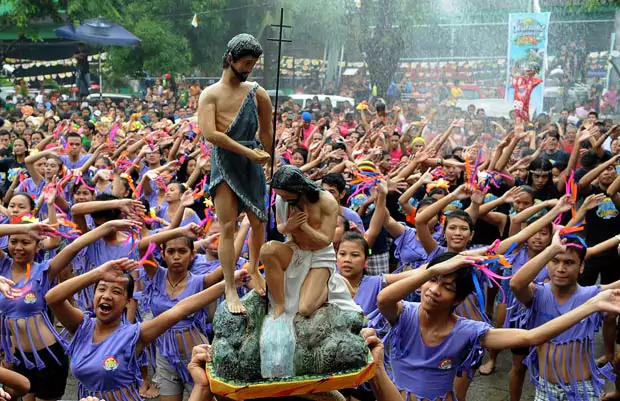
We are at the time of the year when we in the Northern Hemisphere celebrate the sun, with the longest of days being the Summer Solstice on June 21st. More commonly in Europe and other parts of the world, there are celebrations of Midsummer’s Day and the Feast of St. John the Baptist on June 24th. These festivals are often celebrated outdoors with bonfires, feasting, singing and dancing. Stories of fairies are often shared (the most famous, perhaps, being “A Midsummer Night’s Dream” by William Shakespeare.)
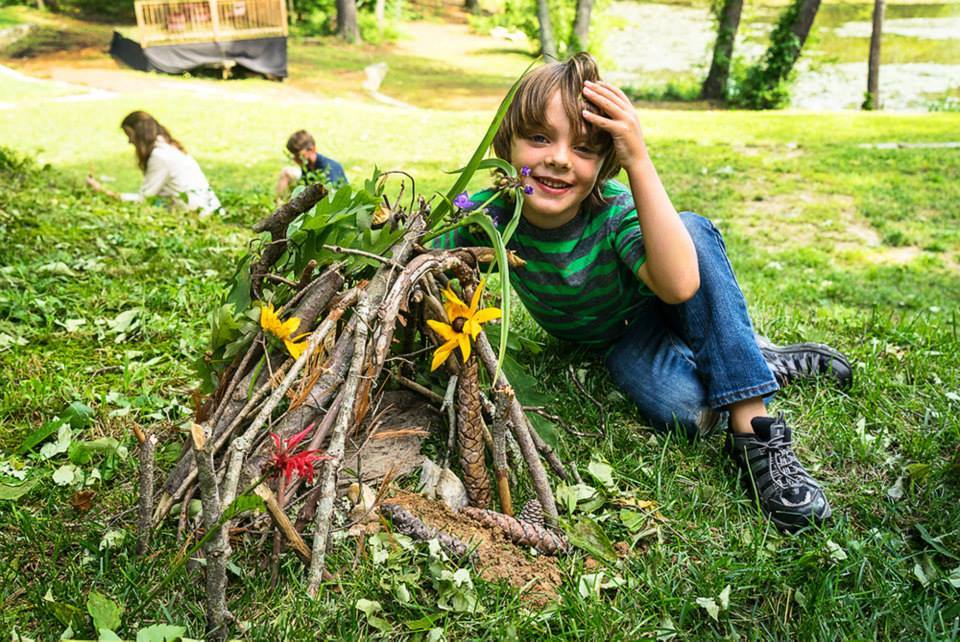
Twenty years ago, when I had a home child care program and three young kids at home, Midsummer’s Day was our main festival of the year, in which we invited families to the lake for a day of celebration. The children heard a folk tale about the fairies (one of our favorites is shared below) and they made fairy houses and left treats for the fairies. While the children were busy swimming and playing, the fairies left them a treat (usually a polished stone) in return! It was one of the only nights of the year they were allowed to stay up late into the night to enjoy a huge bonfire. Celebrating the light of the sun is a joyful and meaningful way to build community. For those who follow a Christian path, St. John’s Day is also a fitting time to look inward and reconnect with the Spirit within. Parenting Passageway has a nice explanation of these festival celebrations.
Blessings to you as the sun reaches its highest point of the year!

Mary O’Connell, Your Living Arts Weekly Editor
Social Awareness
Summer festival ideas from the LifeWays community
Thanks to Kristin Luce from Little Lights Playschool in Portland, OR for sharing this image of their summer celebration, in which they release butterflies they have watched grow from caterpillars.

Another lovely summer festival idea was shared by Ashley Masters, a LifeWays North America board member. Flower crowns are a simple and beautiful adornment for your festival guests! Here’s a pictorial guide to making a crown out of daisies.
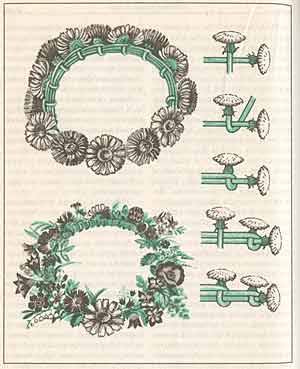
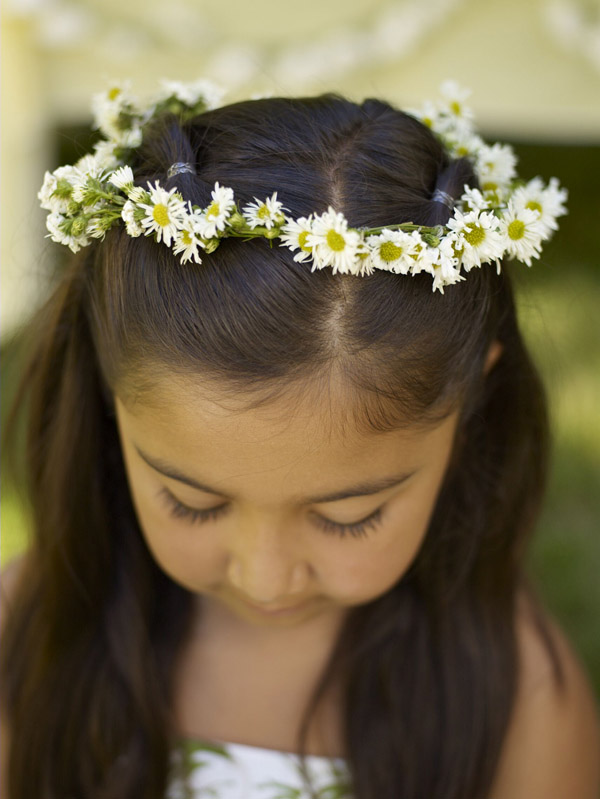
What is your favorite way to celebrate summer? Share in the comments below!
Nurturing Care
A verse about Midsummer’s Eve:
Midsummer Eve, so mother tells
Is meant for dances and fairy spells.
It is not dark, it is not light,
But gray and tipped with glowworm light.
Then all the flowers awake they keep
And whisper softly slow and deep
But most of all a magic song
Sounds from the daisies all night long.
Practical Activity
Make a Sun Cake!
What better way to celebrate the sun than with a Sun Cake? LifeWays training graduate Holly made this for her LifeWays Training class’ commencement celebration, and it was beautiful and delicious!
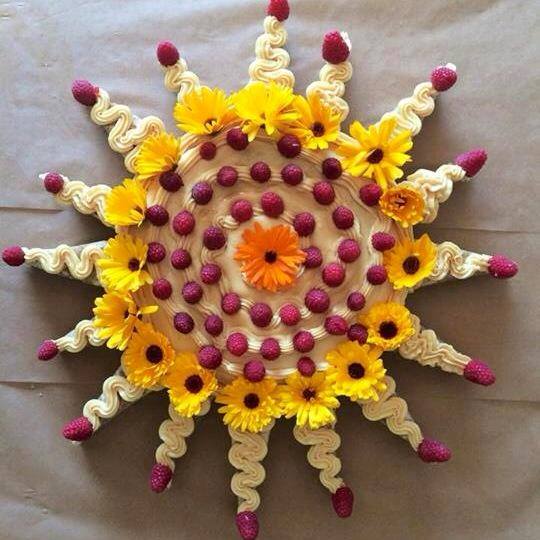
You will need to buy two vanilla organic cake mixes.
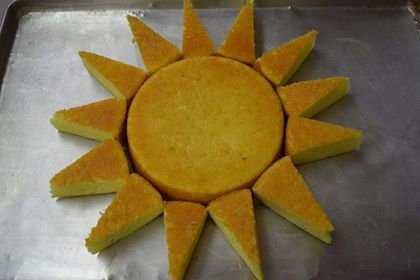
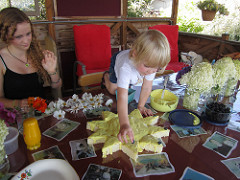
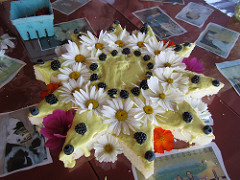
Creative Exploration
Here is a favorite fairy story from Ireland that I adapted years ago for a group of children ages 4 to 10 at our Midsummer’s Day Festival. The children giggled to hear about the naughty girl who became nice with the help of the fairies.
Wee Meg Barnileg and the Fairies
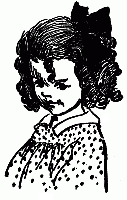
Once upon a time, on the banks of the river Lough Erne, a wealthy farmer and his wife had a little girl named Meg Barnileg. Meg was a spoiled little girl, because her parents let her do and say whatever she wished. And so she did. Everywhere Meg Barnileg went, she behaved rudely – shouting when she wanted something, throwing and breaking things, and tearing her clothing when she didn’t like what her mother put out for her to wear. She pestered animals — pulling the cat’s tail, chasing the dog with a stick, and pulling the wings off of flies.
Meg refused to eat the food that was put in front of her, throwing it off the table and demanding something else. Meg’s poor mother was exhausted. She would say, “Dear Meg, you must eat something to keep up your strength! Now come on, be a good girl and your father will take you to the store and buy you some sweets.” But Meg would only do what Meg wished to do in the moment, and so she did.
When the neighbors would see Meg coming, they would say, “Oh, Lordy, here comes Wee Meg Barnileg. Quick, hide the new butter crock and put the best platter under the bed! Put the chickens away, and let’s pray we survive the visit without anything broken!” One day while visiting the neighbor’s house with her Mother, Meg poked and teased the kind old dog, Jack, until he growled at her, and Wee Meg howled and yelled, “Old Jack bit me! Old Jack bit me!” While her mother held her and cooed, “Poor dear,” the neighboring farmer told Meg she got what she deserved for pulling the dog’s tail and poking him in the eyes. Meg got angry and ran out of the house.
She ran far out into the fields where the farmhands were working, and she ran and hid behind a haystack. In her anger, she grabbed fistfuls of hay out of the stack and threw them all over. After a while, she wore herself out, so she lay down and closed her eyes. Soon she was fast asleep. She slept all afternoon. The farmhands finished their work and went on home as the sun sank lower and lower in the sky. Meg woke with a start, and she heard voices. She looked in the direction of the voices and saw a troop of wee, tiny fairy men. One of them was saying, “That child is a terrible nuisance, scattering the hay like this. We’ll never get this cleaned up in time to have a decent dance tonight.” “Yes,” another said, “somebody should teach her some manners. It’s a disgrace the way she wastes food and throws things around. She has her poor mother worn to the bone, what with all the mending and cleaning and cooking for her. It’s a crying shame.”

Now, any other child would have been frightened to hear such a conversation, but not Meg. She jumped out from behind the haystack and began to yell and scream. One of the fairy men commanded, “Make the fairy ring!” And all the wee men quickly formed a ring around Meg and began to dance and sing:
Ring, ring in a fairy ring
Fairies dance and fairies sing
Round, round on soft, green ground
Never a sound, never a sound.
Sway, sway as the grasses sway
Down by the lough at the dawn of day
Circle about as we leap and spring
Fairy men in a fairy ring.
Light on your toe, light on your heel
One by one, in a merry, merry reel.
Fingers touching, fingers so
Round and round and round we go!
When the song was finished, the wee men clapped their hands, kicked their heels and spun like a hundred spinning tops. Meg tried to move her arms and legs, but she couldn’t move. She opened her mouth to scream, but she couldn’t utter a sound! A hundred pairs of fairy hands took Meg and tossed her up, up into the air and she felt herself falling down, down, down through a dark, black hole until she landed softly onto a pile of leaves. She was in the heart of the fairy home, and although she was below the ground, a gentle light shone from what looked like thousands of glow worms hanging on the walls and ceilings of the dark cavern. The place was beautiful, but the floor was covered in scraps of food.
Meg found she could speak and move again, and she complained to the fairy men about how poorly they kept their living space. They chuckled. “Meg, this is all the food you have wasted in your life. Here’s a rake and a broom. Clean it all up. If you get hungry you can eat it.” Meg stomped her feet and declared that she would never eat this rubbish, but the fairy men had all disappeared. For a long time, Meg sat there and refused to clean up the food. But when she realized no help would come, she began raking and sweeping and tidying. When she got hungry, she found a morsel of food that didn’t look too stale and ate it. She cleaned and worked until the place was sparkling, and she was exhausted. The fairy men returned and gave her some fresh bread and milk – she had never tasted anything so good!
Next, the fairy men said, “We have another wee task for you,” and they led her into another cavernous underground space. It was cluttered with dirty, torn dresses, all the clothing that Meg had ever worn since she could first crawl as a baby. Meg snarled, “What do you want me to do with this lot?” The fairy men replied, “Wash, iron and mend your clothes.” “I WON’T! WON’T! WON’T!” yelled Meg. But the fairy men had again disappeared. For a long time, Meg screamed and yelled and threw a tantrum, but no one heard her. She decided to wash, iron and mend the dresses because there was nothing else to do, but she didn’t know how. Just then, a fairy man appeared and taught Meg how to wash, iron and mend. She washed until her hands were red and sore, she burned finger with the iron, and poked her thumb with the needle. But she managed to take care of each dress, until they were all neatly folded into piles.
When she was finished, the fairy man took her to another cavern that was filled with the largest, prickliest, pokiest weeds she had ever seen. Amongst the weeds there were pretty flowers here and there. “The weeds are all the nasty and unkind words you have spoken. The flowers are the nice things you have said. You must pull the weeds and put them over in the compost heap.” Meg shouted, “NO! NO! NO!” and three more giant weeds popped up. The fairy man said, “You must learn to control your tongue.” With that he disappeared. Meg looked around at all the weeds that outnumbered the flowers. Had she really been that nasty? She sighed, and for the first time felt very badly for all the mean things she had said. She began to pull the weeds and put them into the compost heap. It was a terrible job. The stings made her hands hurt, her knees were sore from crawling, and her back ached. At long last she was finished, and she stood up and admired the beautiful flowers that remained. She lifted her skirts and began to dance with joy.
Fairies love to dance, so when they saw Meg dancing they asked if she would like to come above ground to the fairy dance. She enthusiastically replied, “Yes, please!”
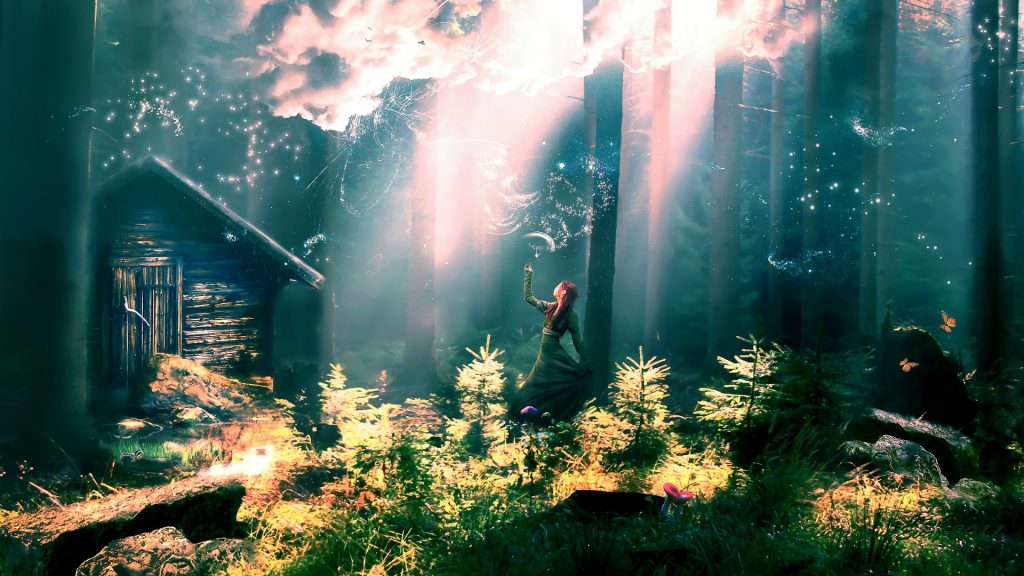 Soon she was dancing with the fairies by the light of the silvery moon. Her heart was full of gladness, so delighted was she that she had been able to repair the damage she had done. Now she missed her parents and she wanted to go home. Just then, Meg looked down and saw a four leaf clover. She pulled it from the ground and said, “I wish to go home.” Instantly, she found herself in her own bed. She ran to her parents’ room and hugged her dear father and her sweet mother. From that day on, Meg was a changed person. She was thoughtful, kind and gentle. She helped her parents around the house, was grateful for the food put before her, and always said kind words. Today if you walk along the banks of the river Lough Erne and see a child who is well-mannered and kind, the neighbors will probably tell you, “That’s a great-great-grandchild of Wee Meg Barnileg.”
Soon she was dancing with the fairies by the light of the silvery moon. Her heart was full of gladness, so delighted was she that she had been able to repair the damage she had done. Now she missed her parents and she wanted to go home. Just then, Meg looked down and saw a four leaf clover. She pulled it from the ground and said, “I wish to go home.” Instantly, she found herself in her own bed. She ran to her parents’ room and hugged her dear father and her sweet mother. From that day on, Meg was a changed person. She was thoughtful, kind and gentle. She helped her parents around the house, was grateful for the food put before her, and always said kind words. Today if you walk along the banks of the river Lough Erne and see a child who is well-mannered and kind, the neighbors will probably tell you, “That’s a great-great-grandchild of Wee Meg Barnileg.”
Light up your life
With an online course from LifeWays!
We’ve just scheduled several online courses, including Rahima’s ALL NEW course “Bringing Home into Your Childcare Program“!
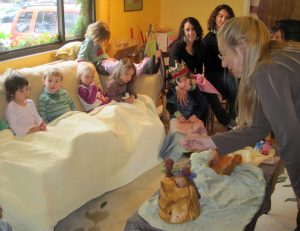
Visit our website to register for your next online course. Coming Soon: Mary’s NEW two-week course “Observing Young Children,” based on the LifeWays’ book by the same name.
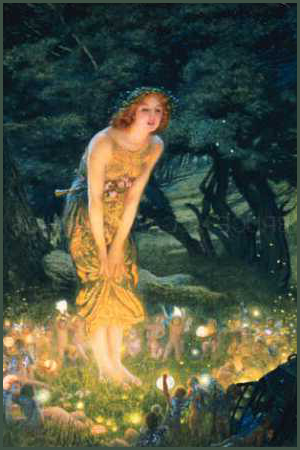 Is meant for dances and fairy spells.
Is meant for dances and fairy spells.
~What a Beautiful story~I will print this to send to my grandchildren~It is good to have these stories that teach to help the children learn while keeping the magic alive for them~Many Blessings~
Am a founding parent of the Waldorf School on Cape Cod~It was amazing magic to be a part of that with wonderful parents~
Thank you, Michelle! What joy to have been a founding parent of a successful school, and to watch it continue to thrive.